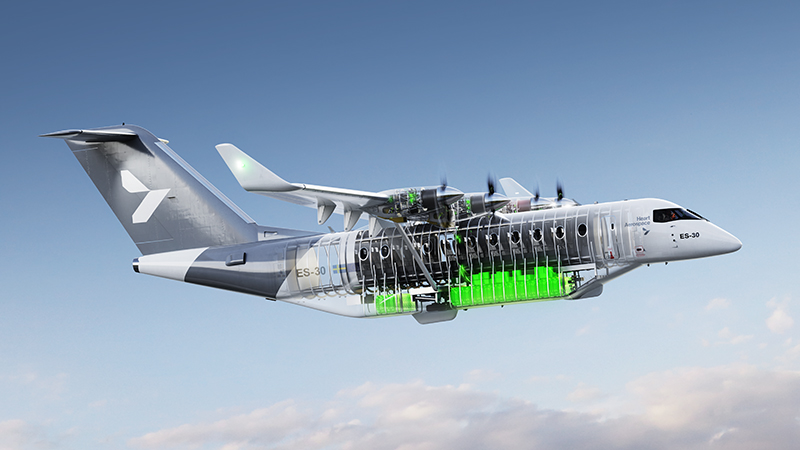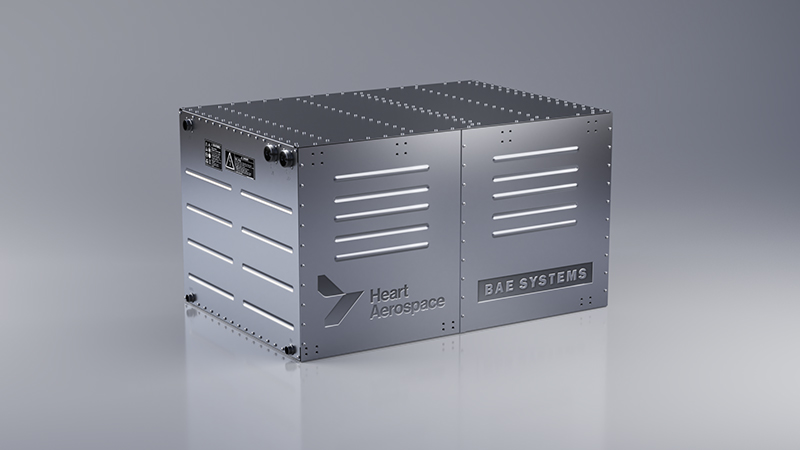

Image courtesy: Heart Aerospace/BAE Systems
As we move towards decarbonising aerospace, manufacturers are looking towards both existing and innovative solutions. One option that combines both is the use of battery power. After all, batteries themselves aren’t new, but using them to power aircraft drivetrains is a novel concept.
A recently announced collaboration between Heart Aerospace and BAE Systems is a major step forward in the idea of using batteries in aircraft. Below, we’ll cover the collaboration itself and what this could mean for the larger aerospace industry.
Heart Aerospace is an electric aircraft manufacturer based in Sweden. Its main product, the ES-30, is an eCTOL (electric conventional take-off and landing) aeroplane that’s due to enter service in 2028. Using current battery technology, its four electric motors will have a range of 200km when carrying 30 passengers, although its range can be extended to 400km using its reserve hybrid generators.
As the range suggests, the ES-30 will serve a regional role, such as island hopping or short-range domestic flights. However, one of its major selling points is its scalability as future battery technology improves. And that’s where BAE comes in.
BAE is a well-known name in the aerospace industry, so it should come as no surprise that it has a role in this collaboration. However, considering the novelty of battery technology in aircraft, it’s fair to wonder what BAE will bring to the table.
The answer lies in its extensive experience with battery technology in general. For more than 25 years, BAE has been developing electric systems for heavy-duty industrial ground vehicles; it currently has more than 15,000 operational electric power systems around the world. Although batteries have yet to be tested in aircraft, there could hardly be a better company to have on board for this.

Image courtesy: Heart Aerospace/BAE Systems
BAE’s expertise in battery power and aerospace safety makes it an ideal collaborator for the development of aircraft battery technology. Its partnership with Heart Aerospace will look to develop viable and scalable battery technology for powering aircraft, which comes with a range of unique challenges.
For example, Heart Aerospace’s current planned range for the ES-30 is 200km. While this isn’t a short distance, it plans to double this range in the next 15 years or so. Doing so will require some major developments to current battery technology, and this is what the collaboration will help to achieve.
The main goal, other than decarbonising aerospace, is to develop a viable battery solution for aerospace. The power requirements and weight considerations of aircraft make batteries an interesting choice, as they need far greater energy density than batteries for land vehicles. But this is arguably where BAE’s expertise comes in.
Another obvious goal is to ensure batteries are as safe as possible for use in aircraft. Rechargeable batteries are by no means dangerous, but there are unique considerations to putting them in the sky. Again, BAE’s industry knowledge will be invaluable in this regard.
We’re still a long way off from batteries becoming a viable solution for powering aircraft. However, the rechargeable battery market is crying out for its next revolution, and the development of batteries in aerospace could help spur this on. It’ll be interesting to see what this collaboration between Heart Aerospace and BAE Systems brings to the table.
